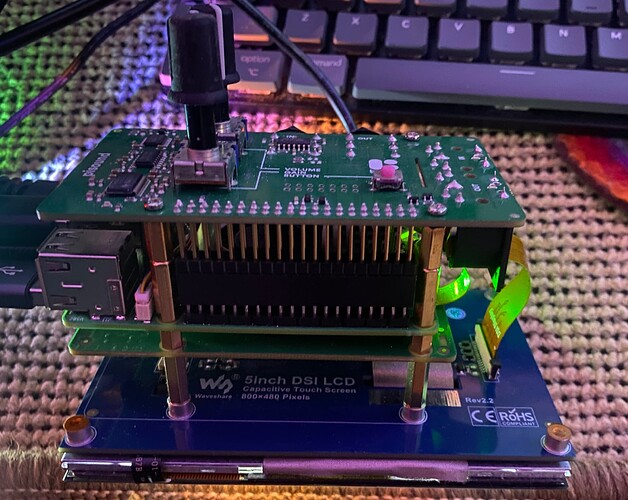Hey folks!
I recently added a Waveshare 5" display to my Rpi5 + PiHat Drive NVME + Pisound – so it’s a pretty beefy system; I love it!
Only one thing is kinda “weird” my big sandwich setup has on one side a display and on the other a pisound with two potentiometers and a button; so usability-wise it’s a bit strange (although … those knobs are pretty much set and forget – as in I use them only once per year maybe).
So how about putting the pisound next to the display (I really like the sturdiness of my current setup, the Pi5 being mounted to the display)
Still I was thinking: Would it be possible to add a few extensions (forming basically an “U”) or now that I think about it probably better to use one of those flatbendcables and mount it to a faceplate / case front …
My question is basically: Can I extend the Pisound or is there a limit to how long an extension can be (also in terms of interferences introduced by it / catching HF signals etc.)
Any ideas / thoughts?
Here is a picture:
You may use a 2x20 IDC ribbon cable for placing the Pisound to the side of the screen, or at some other location. We’ve successfully used such cable as long as 30cm.  Trickiest thing with that is finding an IDC connector with male pins. A hack we’ve used is to install a 2x20 male pin header with long pins inside a female connector, so the Pisound can get connected.
Trickiest thing with that is finding an IDC connector with male pins. A hack we’ve used is to install a 2x20 male pin header with long pins inside a female connector, so the Pisound can get connected.
Also something that duplicates the GPIO header might be useful to you, try searching for “Raspberry Pi GPIO replicator”
One more option is to design a PCB with a couple of male headers at appropriate locations. You could connect the Raspberry Pi itself with a short IDC cable to the main board, so both the Raspberry Pi and the Pisound can be on the same side of the main board.
2 Likes
Ah, I LOVE the concept of a screen integration!
Not sure where you are based, but Pimoroni offer some good things that may help you.
The have a male-female Ribbon for £3, and a stacker board that allows multiple hats to be used with one Pi at the same time.
While I konw there’s only the Pisound using GPIO the pHAT stack’s mounting holes may be a convenient way for you to mount all your boards to a ‘backplane’.
1 Like
thanks! will look into it!
